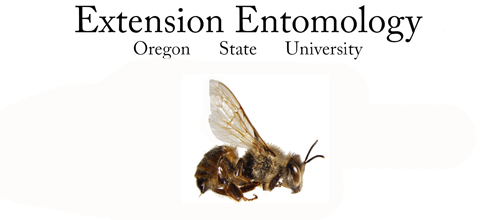Honey Bee Diagnostic Services
Nosema
Causative Agent: Nosema aphis (Microsporidia: fungi)
Range: Worldwide
Life cycle/ Symptoms:
- Newly emerged adults are always free of the disease but may become infected at feeding. The spores are ingested and develop in the gut. The spores rupture the lining of the gut and within 5 days new spores form and can be passed via feces to a new host.
- Problems most often occur following winter, it is believed that the pathogen builds in numbers during the winter season.
- In spring adult bees infected with this disease typically exhibit dysentery and individual bees may die. In rare cases when the hive is severely infected the colony may collapse.
Management:
- This disease is usually only a problem for keepers in cold climates (northern states).
- Positive identification is only possible by extracting the gut and looking for spores under a microscope. However there are several things which serve as good indicators of the disease:
• Colonies heavily infected will have adults outside of the hive crawling on the ground (often without wings and obviously balding)
• Signs of dysentery include the accumulation of fecal material on the bars of the comb and at the hive entrance.
• Bees can be field checked for infection by pinching off the head and then pulling the last segments of the abdomen from the body. The gut should be removed from the body by doing this. A healthy bee should be brownish-red to yellow and appear to be ribbed (similar to corrugated pipe) when viewed with a hand-lens. An infected bee's gut will be gray/white, the midgut should be twice the diameter of that of the healthy bee, and will lack ribbing.
Misconceptions:
- There are several different species of Nosema each has a specific host. Therefore cross species transmission is not possible (e.g. honey bees with Nosema cannot transmit the disease to mason bees and vice versa.)
Other Useful Sites:
References :
Root, A. I. (1990) The ABC & XYZ of bee culture 40 th ed. A.I Root Co. Medina, OH.
Morse, R.A. & R. Nowogrodzki (eds). 1990. Honey bee pests, predators and diseases . Cornell University Press Ithaca , NY .
Printable pdf version
|
